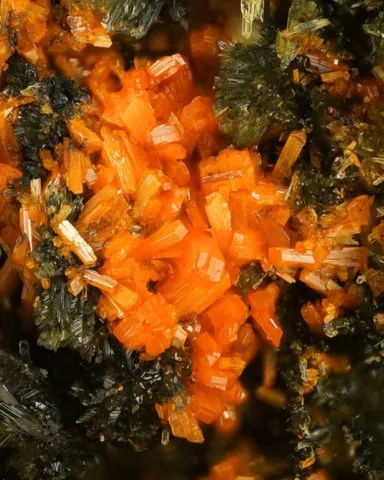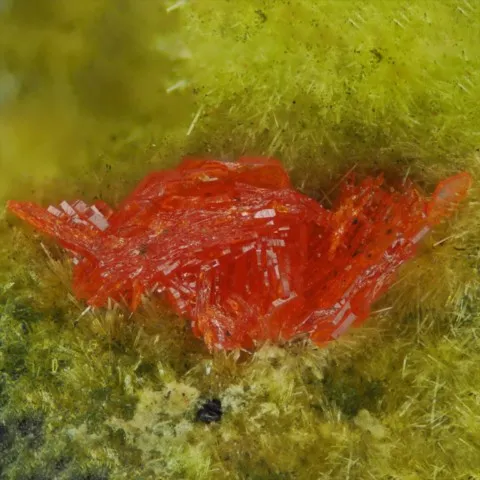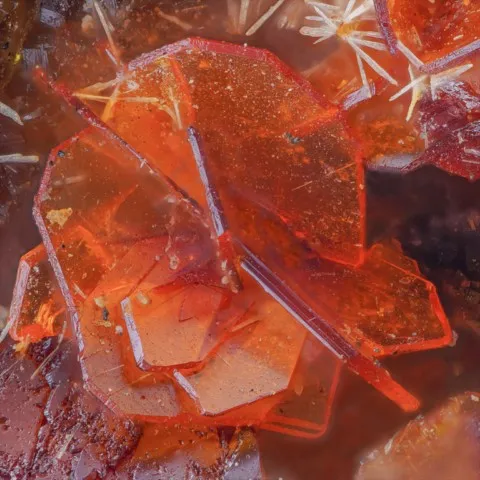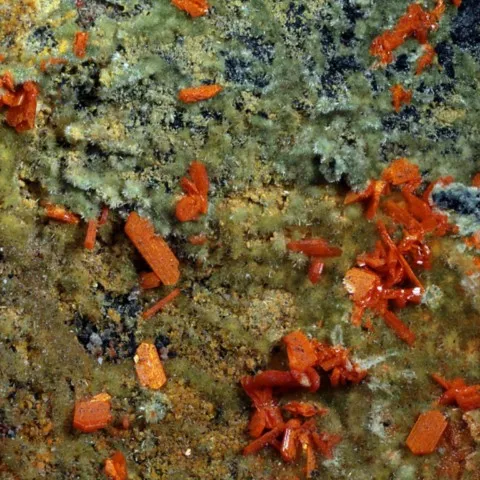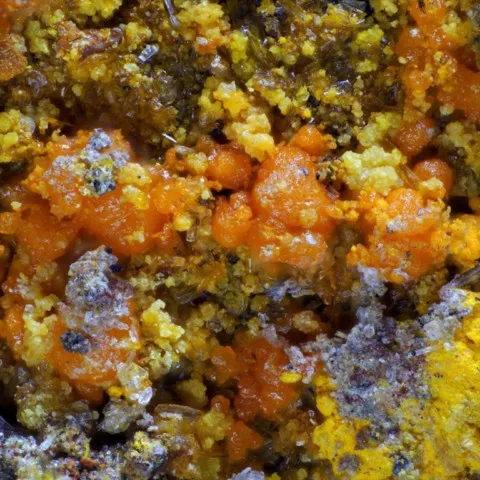MASUYITE
Class : Oxides and hydroxides
Subclass : Uranyl hydroxides
Crystal system : Orthorhombic
Chemistry : Pb3U8O27 10H2O
Rarity : Very rare
Masuyite is an extremely rare hydrated oxide of lead and uranium. It is a secondary mineral formed by oxidation of uraninite, which is found in uranium deposits along with other secondary uranium minerals (becquerelite, fourmarierite, uranophane, etc...). It was named in honor of the Belgian geologist Gustave Masuy, a specialist in Congo minerals. Masuyite forms tabular pseudohexagonal crystals not exceeding 3 mm, red-orange to carmine red in color.
Main photo : Masuyite from Shinkolobwe, Katanga, Democratic Republic of Congo © Stephan Wolfsried
Masuyite in the World
Twinning
Twins are very common on {110} and {1-30}.
Fakes and treatments
No fakes recorded for this mineral species.
Hardness : Undetermined
Density : 5.08
Fracture : Undetermined
Streak : Undetermined
TP : Translucent to transparent
RI : 1.785 to 1.917
Birefringence : 0.130 to 0.132
Optical character : Biaxial +
Pleochroism : Low
Fluorescence : None
Solubility : -
Magnetism : NoneRadioactivity : Very strong

